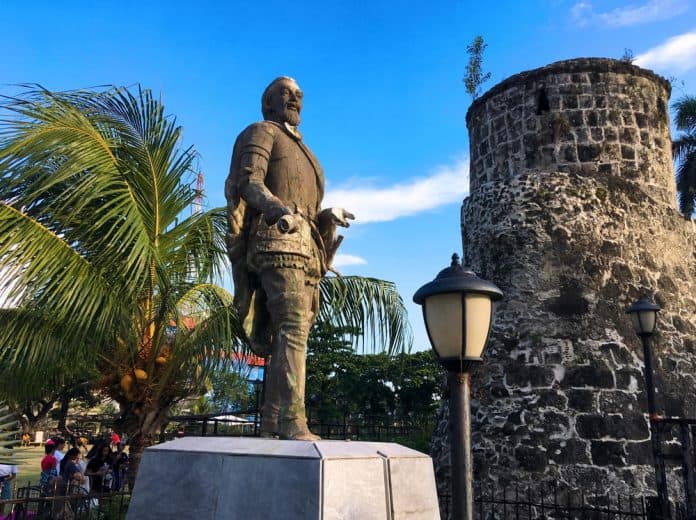
Amid the quarantine restrictions brought by the pandemic, the Department of Public Works and Highways (DPWH) finished P13.6 billion worth of infrastructure projects in Central Visayas in 2020, as cited in this GMA News Online report. The initiatives were construction, rehabilitation, improvement, and maintenance of different public facilities.
This includes mobility and safety amenities, including national roads spanning 5,203.87 lane kilometers, 55 bridges, and 110 flood control structures. These amount to P4.4 billion, P708 million, and P2 billion, respectively.
The agency completed 754 local infrastructure projects worth P3.1 billion, involving multi-purpose and school buildings, local roads and bridges, flood control and drainage, and water systems.
Inter-agency Projects Completed
Likewise, there were initiatives in collaboration with other government agencies. In partnership with the Department of Education, the DPWH provided 189 classrooms and 27 buildings worth P535.4 million. With the Department of Defense, they finished 11 projects priced at P290.30-million.
The national government’s engineering and construction arm was able to complete two structures that amounted to P65 million with the National Disaster Risk Reduction and Management. The projects with the Department of Tourism, Department of Trade and Industry, and Department of Transportation worth P2.3 billion produced 121.73 lane kilometers of roads connected to tourist destinations, ports, and airports.
In collaboration with the Department of Agriculture, the DPWH constructed 18.8 lane kilometers of farm to market roads worth P208.8 million.
Big-Ticket Infrastructure Underway
The construction of other massive infrastructure in Central Visayas is still in progress. Among them is Metro Cebu’s third bridge, also known as the Cebu-Cordova Link Expressway (CCLEx). The iconic landmark is expected to accommodate 50,000 vehicles daily, as it links mainland Cebu to the town of Cordova in Mactan Island.
Citing an update from the construction team, Business World reported that the infrastructure will see completion in December this year. Last January, the overall engineering, procurement, and construction (EPC) contract of CCLEx was at 68.21 percent while construction was at 59.68 percent completion. In February, concreting works for the two main bridge pylons, the towers supporting the structure, were already finished.
Another big-ticket infrastructure under construction in Central Visayas is the Metro Cebu Expressway. In October last year, most of the developments happened in the village of Pangdan in Naga City, as the construction team focused on the third segment of the 73.75-kilometer highway, Sunstar reported.
Linking Naga City in the south and Danao City in the north, the thoroughfare is expected to cut travel time between the two locations by half, from three hours to one hour and 25 minutes. It will serve key cities and towns, including Minglanilla, Talisay City, Cebu City, Mandaue City, Consolacion, Liloan, and Compostela.
Meanwhile, in Bohol, one of the priority projects is the Panglao-Tagbilaran City Offshore Connector Bridge. Forming part of the revised list of initiatives in 2019, this infrastructure will complement the new Bohol-Panglao International Airport, which was inaugurated in 2018. These projects are expected to bring huge benefits to the tourism industry.
Stronger Property Demand
The completed and ongoing infrastructure projects in Central Visayas will likely contribute to increased real estate appetite in the region as the economy recovers from the ills of the pandemic. In 2020, despite the health crisis, Cebu managed to retain its popularity status on the Lamudi platform.
According to the real estate platform’s trend report titled Hotspots Unwrapped: 2020’s Most Popular Locations, the Queen City of the South represented 26.56 percent of the total pageviews on the platform, a significantly huge share.
Colliers International Philippines projected that the mid-income segment will fuel Cebu’s property recovery. Overseas Filipino workers (OFWs), who make up a significant portion of the market, will likely go for house and lot developments to take advantage of the outdoor space available.
As for the office market, Colliers is confident that Cebu will continue to attract outsourcing companies, as mentioned in The Freeman. It remains to be among locators’ “top favorites” when it comes to destinations outside Metro Manila.
Colliers added that companies may consider setting up shop outside the capital region either to open business or improve business continuity.
Offices within business districts and in nearby locations, such as Mandaue and Mactan, will be more appealing to companies, since these locations have PEZA-accredited spaces.
Article and Photo originally posted by Lamudi last March 8, 2021.







More Stories
Vista Land Celebrates 50 Years with Sandiwa: An Event Honoring Leadership, Legacy, and the Filipino Dream of Homeownership
Vista Land Celebrates Love Month in Ilocos Region
Vista Land Bridges Cebuano Heritage and Progress with Valencia by Vista Estates